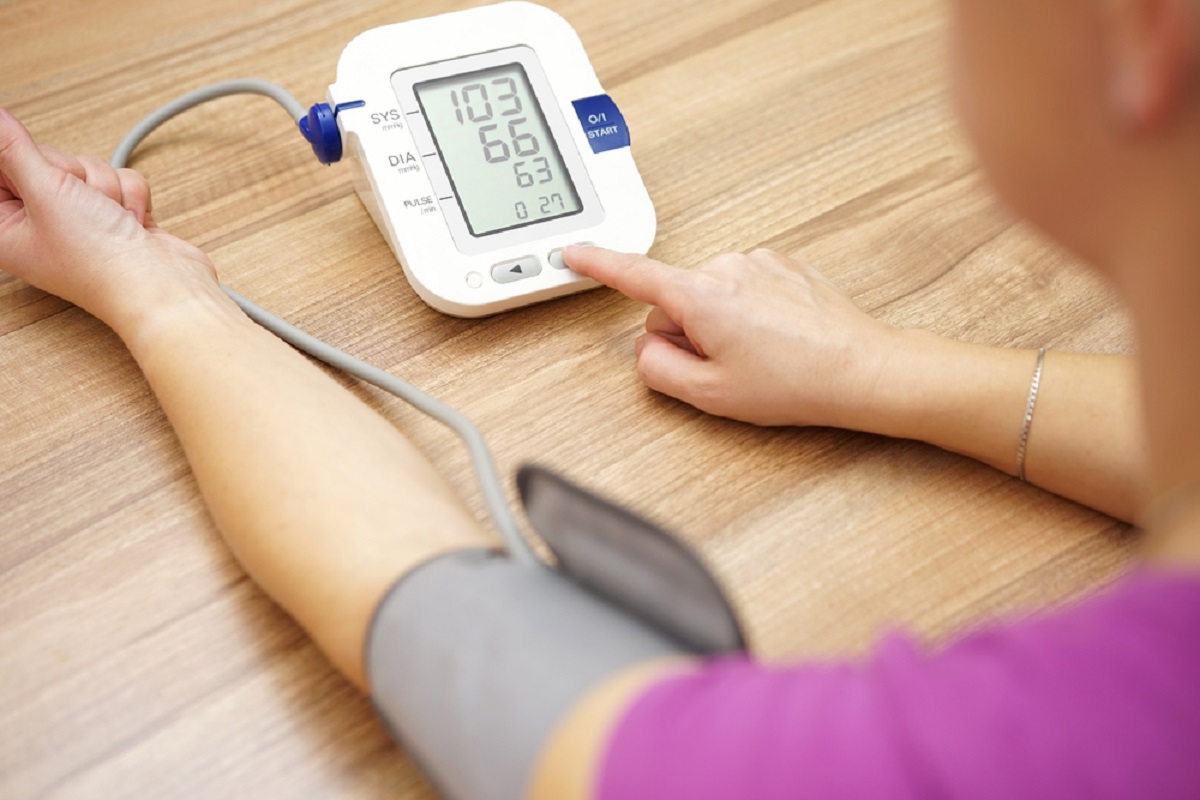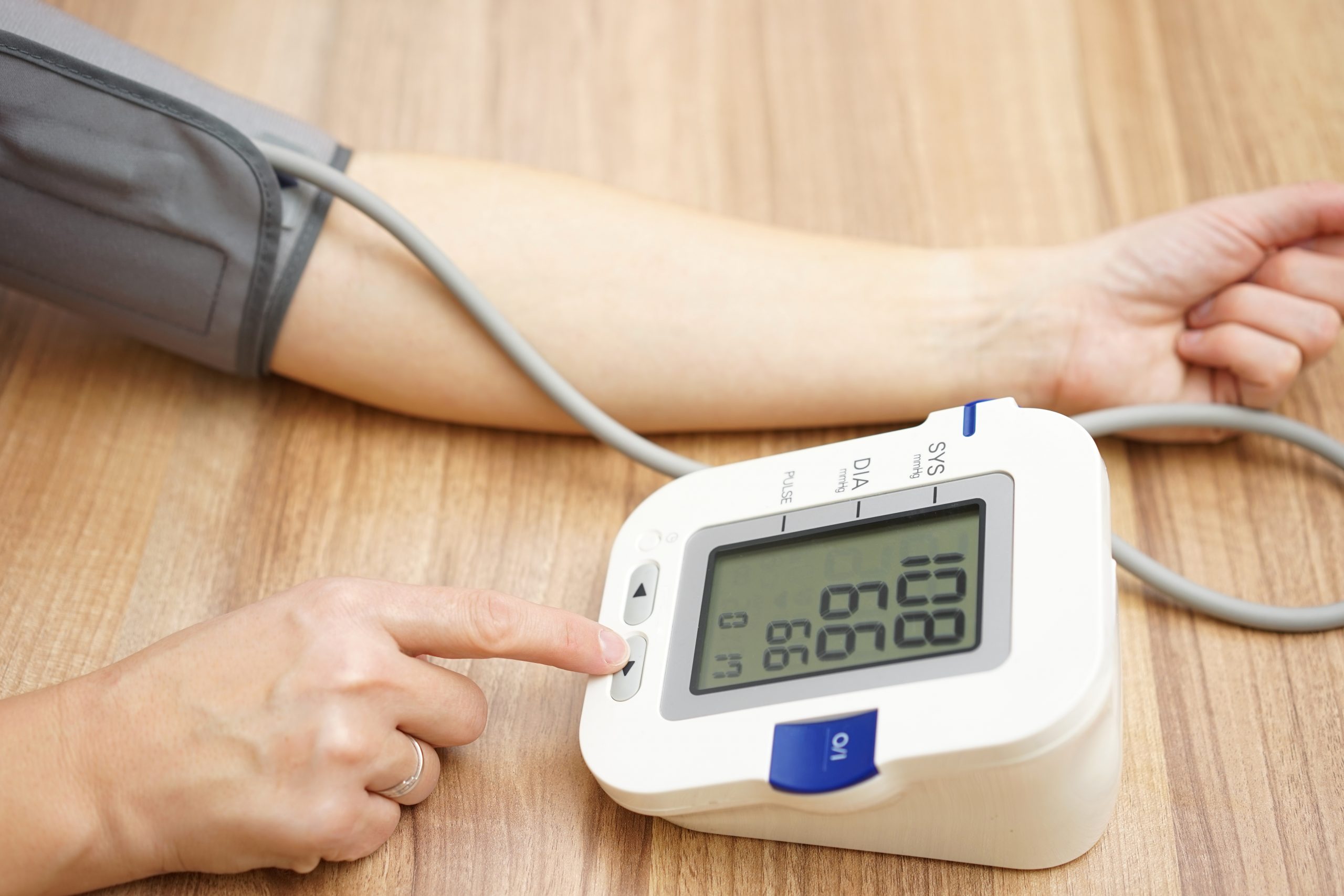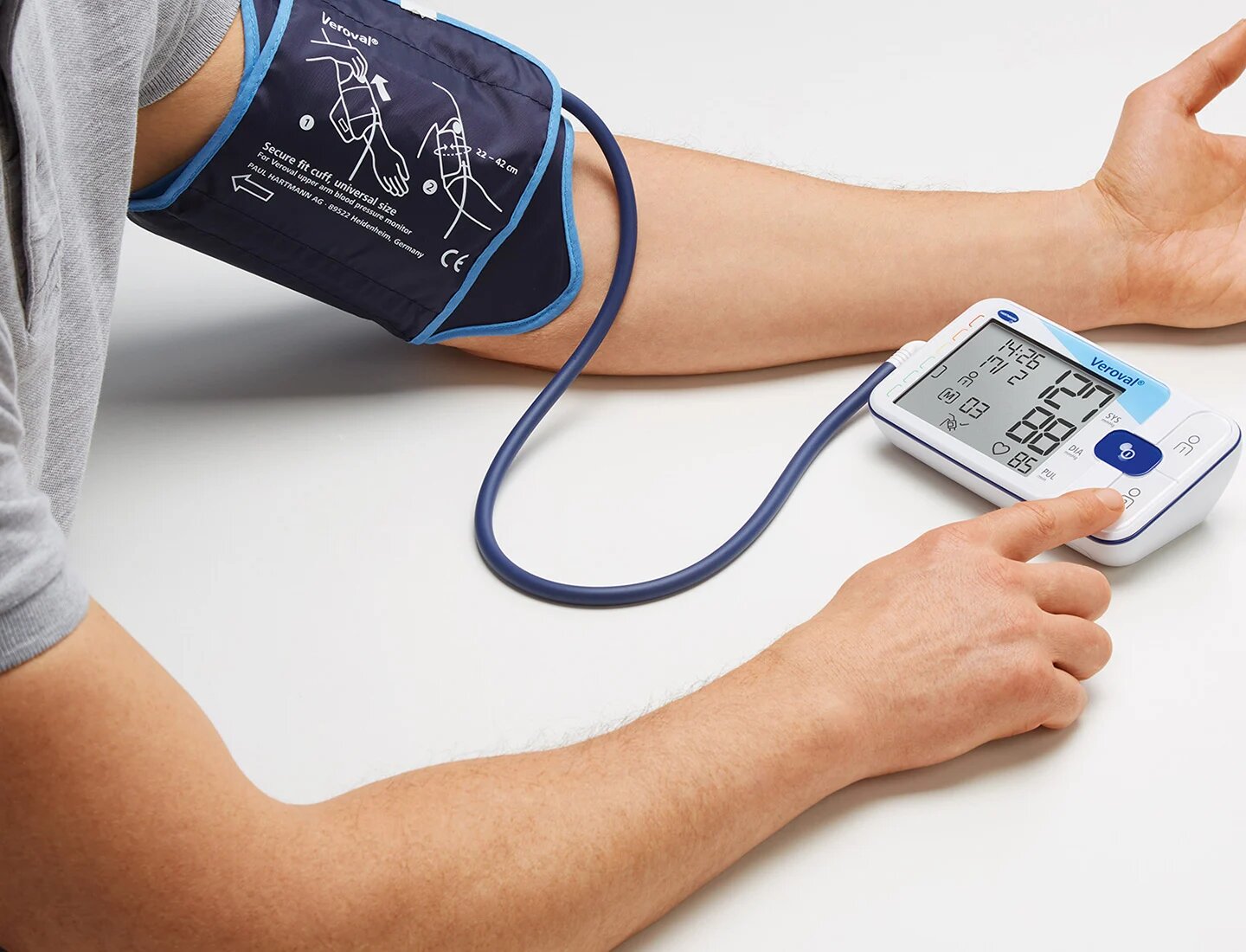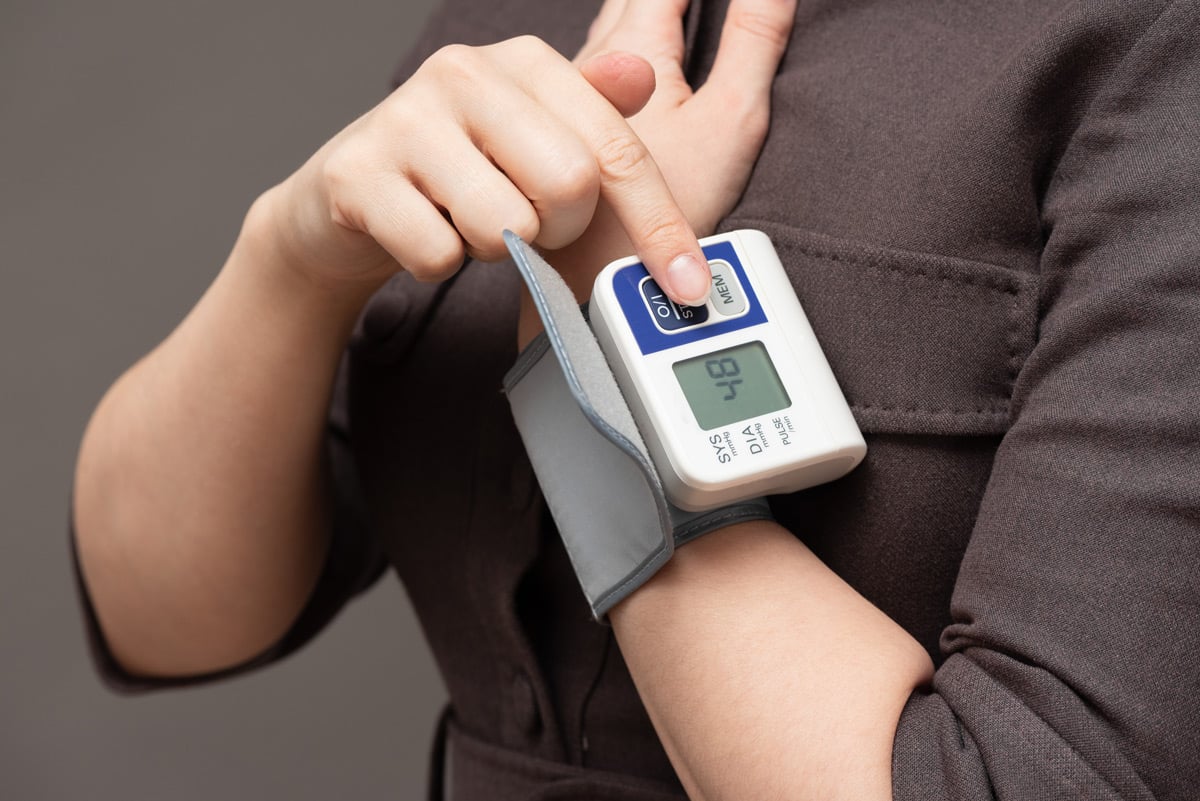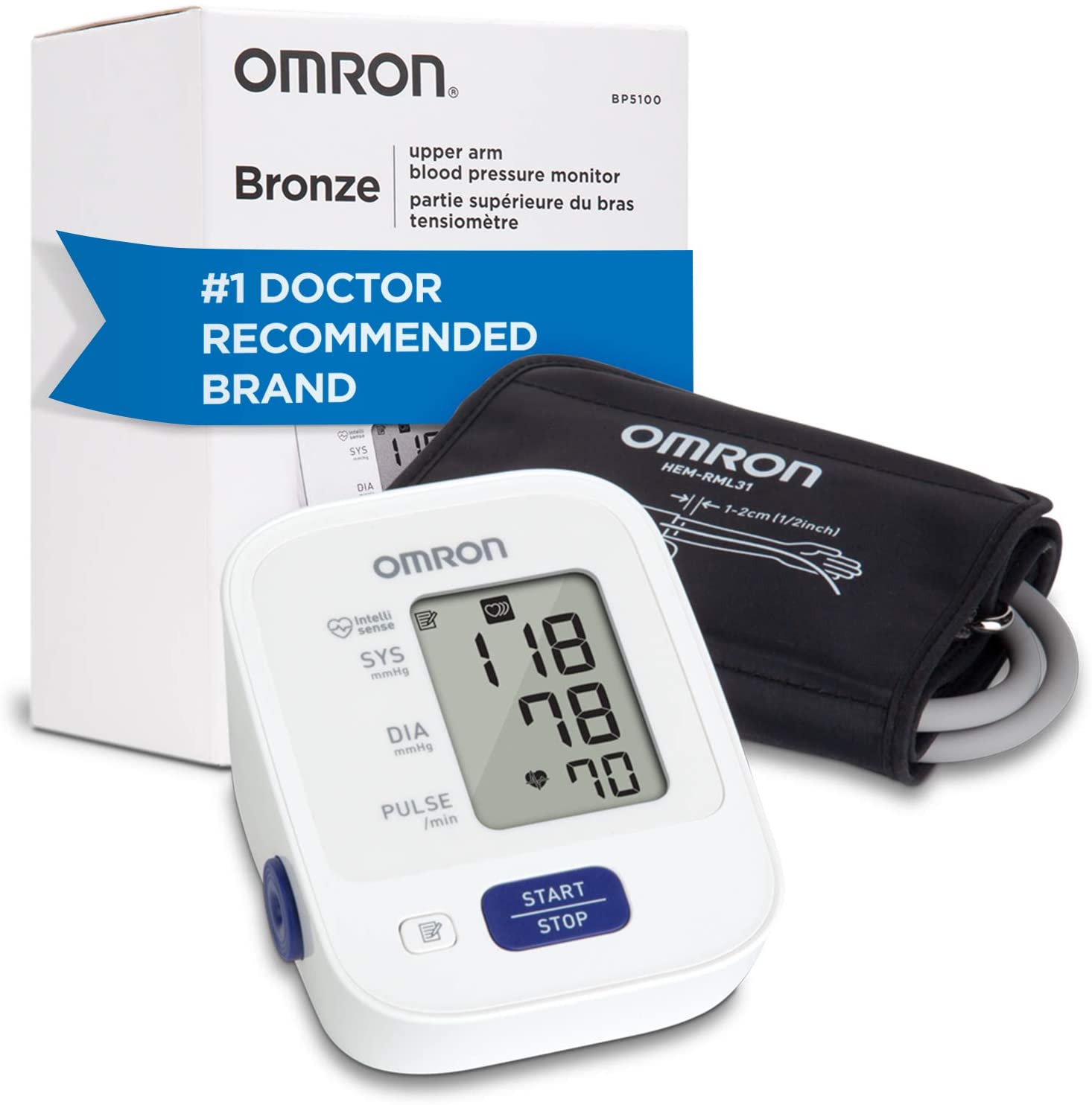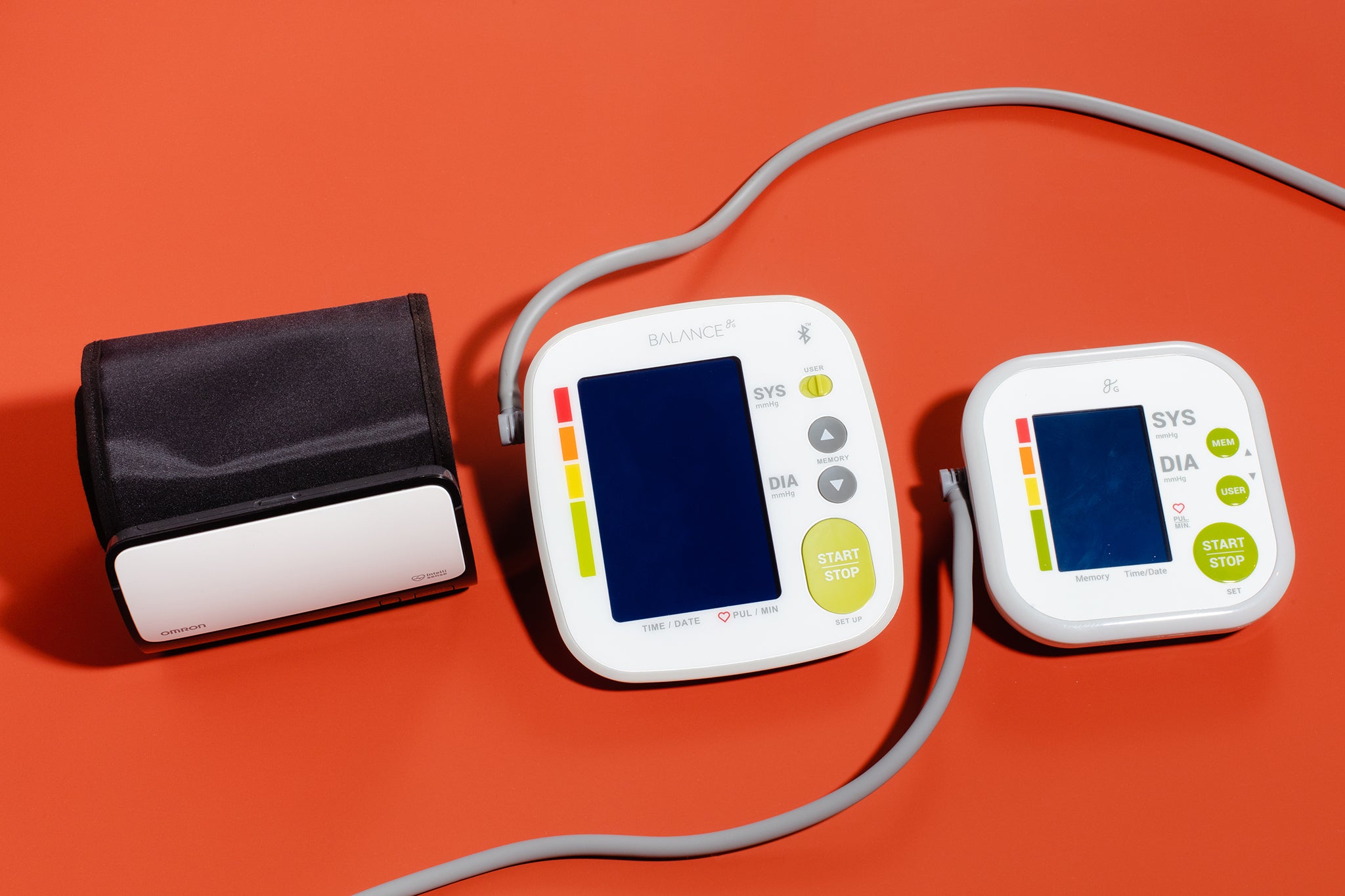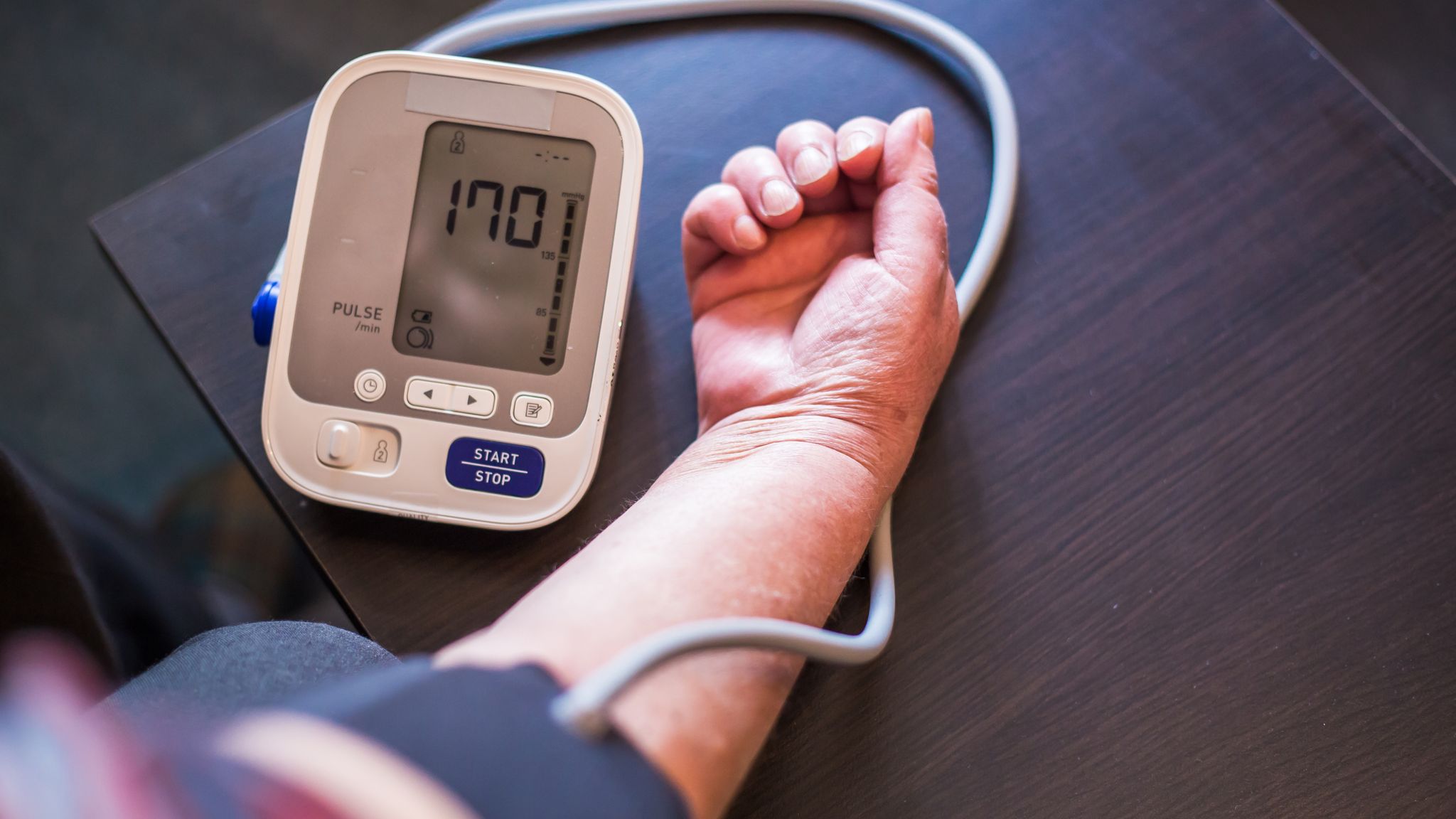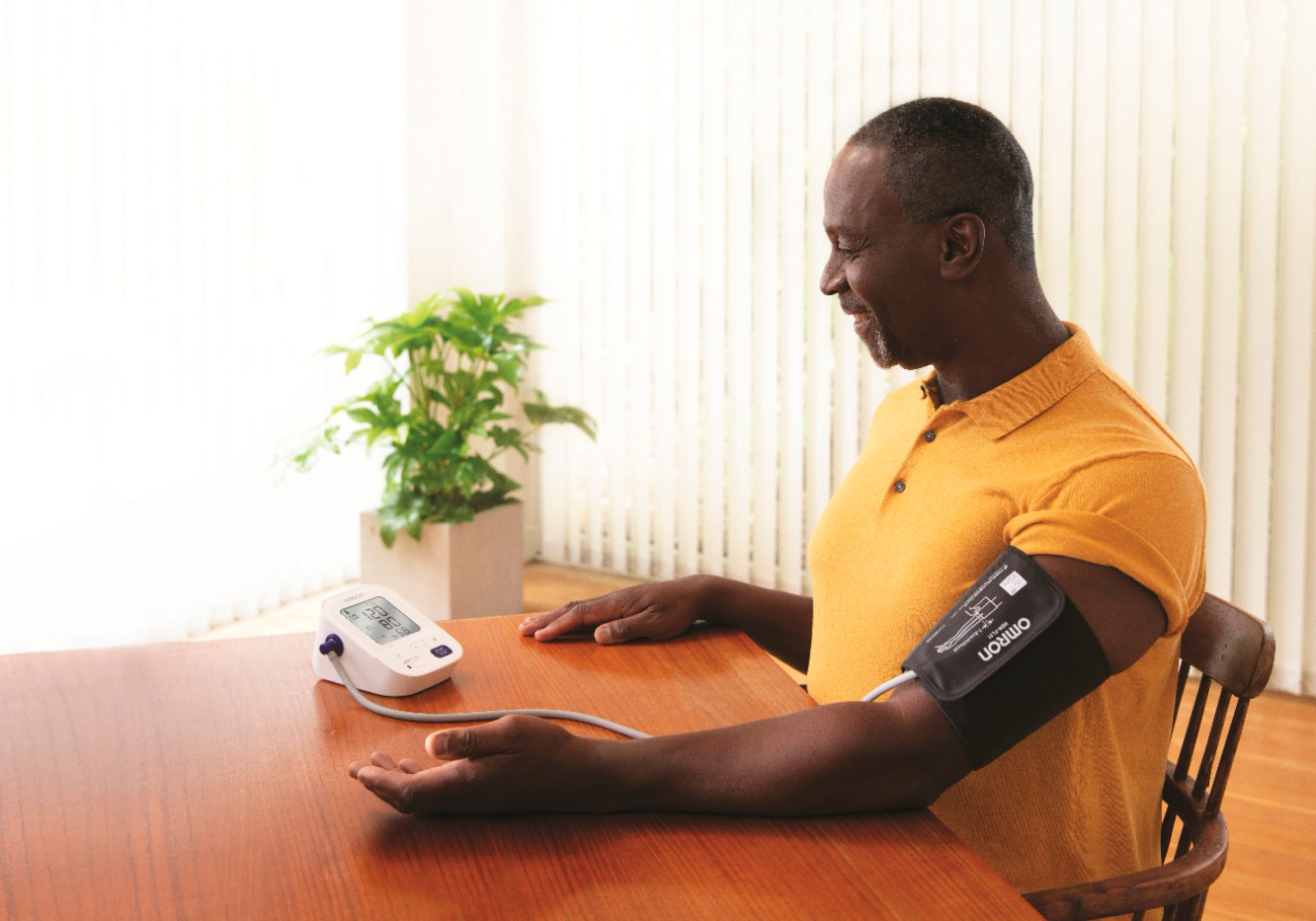Introduction
Welcome to the world of home blood pressure monitoring! In today’s fast-paced world, it’s more important than ever to prioritize our health and well-being. Monitoring our blood pressure on a regular basis is a crucial step towards maintaining a healthy lifestyle.
High blood pressure, also known as hypertension, is a prevalent condition that can lead to serious health complications if left untreated. By regularly checking your blood pressure at home, you can keep track of any fluctuations and take the necessary steps to manage it effectively.
Gone are the days when you had to visit a doctor’s office or a clinic to have your blood pressure checked. Thanks to advancements in technology, home blood pressure monitors have become readily available and user-friendly. With just a few simple steps, you can now measure your blood pressure in the comfort of your own home.
In this article, we will explore the numerous benefits of using a home blood pressure monitor, guide you through the process of choosing the right monitor for your needs, provide step-by-step instructions on how to measure your blood pressure accurately, and offer tips on maintaining your monitor for long-term use.
Remember, this article is not a substitute for professional medical advice. If you have specific concerns about your blood pressure or any pre-existing medical conditions, it’s always best to consult a healthcare professional.
So, without further ado, let’s dive into the world of home blood pressure monitoring and empower ourselves to take charge of our health!
Benefits of Using a Home Blood Pressure Monitor
Using a home blood pressure monitor offers numerous advantages that can greatly benefit your overall health and well-being. Here are some key benefits:
- Convenience and Accessibility: With a home blood pressure monitor, you have the convenience of measuring your blood pressure at any time, without the need for appointments or travel to a healthcare facility. This accessibility allows for regular monitoring and early detection of any potential issues.
- Cost Savings: Home blood pressure monitors are a cost-effective solution compared to frequent visits to a medical professional. By having your own monitor, you can save money in the long run and reduce healthcare expenses.
- Accuracy: Home blood pressure monitors are designed to provide accurate and reliable readings when used correctly. This empowers you to have a better understanding of your blood pressure levels and enables you to make informed decisions regarding your health.
- Personalized Tracking: By monitoring your blood pressure at home, you can create a personalized record of your readings over time. This allows you to track trends, identify patterns, and make necessary modifications to your lifestyle, such as diet and exercise, to improve your blood pressure.
- Early Detection and Intervention: Regular monitoring with a home blood pressure monitor allows for early detection of any abnormalities or changes in blood pressure. This proactive approach enables you to seek timely medical intervention if necessary, preventing potential complications down the line.
- Empowerment and Self-Care: Monitoring your blood pressure at home puts you in control of your health. It empowers you to actively participate in managing your blood pressure, fostering a sense of ownership and responsibility for your overall well-being.
As with any medical device, it’s crucial to follow the manufacturer’s instructions and use the home blood pressure monitor correctly to ensure accurate results. Consulting with a healthcare professional for guidance on using the monitor effectively is also recommended.
Now that we have explored the benefits of using a home blood pressure monitor, let’s move on to the next section where we discuss the factors to consider when choosing the right monitor for your needs.
Choosing the Right Home Blood Pressure Monitor
When it comes to selecting a home blood pressure monitor, it’s important to consider several factors to ensure you choose the right one that meets your specific needs. Here are some key points to keep in mind:
- Accuracy: Look for a monitor that is clinically validated and has undergone rigorous testing to ensure accurate readings. Check for certifications and references to ensure the monitor meets industry standards.
- Cuff Size: It’s essential to choose a monitor that includes a cuff that fits your arm properly. Using an incorrectly sized cuff can result in inaccurate readings. Most monitors offer adjustable cuffs, but make sure to check the size range and measurements before purchasing.
- Display and Controls: Consider the display size and readability of the monitor. Opt for a device with a clear and easy-to-read display, large numbers, and backlit options for better visibility in different lighting conditions. Additionally, user-friendly and intuitive controls can enhance your overall experience with the monitor.
- Memory and Data Management: Look for a monitor that provides memory storage to store your blood pressure readings. This allows you to track your progress over time. Some monitors also offer data management options, such as syncing with mobile apps or computer software, making it easier to manage and share your data with healthcare professionals, if needed.
- Additional Features: Consider any additional features that may be beneficial for you. This could include irregular heartbeat detection, averaging of multiple readings, morning and evening blood pressure tracking, or even a built-in alarm or reminder system.
- Cost: Set a budget and consider the price range of available options. While it’s essential to invest in a quality monitor, it’s also important to find a balance between affordability and features that meet your requirements.
- Customer Reviews and Feedback: Take the time to read customer reviews and feedback on different home blood pressure monitors. This can provide valuable insights into the product’s performance, durability, and user experience.
Remember to consult with your healthcare professional for recommendations and guidance, as they may have specific suggestions based on your individual needs and medical history.
With these considerations in mind, you can confidently choose a home blood pressure monitor that suits your requirements and empowers you to monitor your blood pressure effectively.
Next, we will explore the step-by-step process of preparing to take your blood pressure measurement, so stay tuned!
Preparing to Take Your Blood Pressure
Before measuring your blood pressure at home, it’s important to prepare properly to ensure accurate readings. Follow these steps to prepare yourself for a blood pressure measurement:
- Choose the Right Time: Find a time when you are relaxed and not rushed. Avoid measuring your blood pressure immediately after exercise, consuming caffeine, or smoking, as these factors can temporarily affect your readings.
- Empty Your Bladder: To minimize any discomfort during the measurement, make sure to empty your bladder before taking your blood pressure. A full bladder can temporarily raise your blood pressure readings.
- Rest for a Few Minutes: Sit in a quiet and comfortable location and rest for at least 5 minutes before beginning the measurement. This allows your body to relax and stabilize your blood pressure.
- Proper Positioning: Sit in a chair with your feet flat on the ground. Your back should be straight, and your arm should be supported and relaxed at heart level. Remove any tight-fitting clothing that might interfere with the cuff placement.
- Avoid Distractions: Minimize any distractions and ensure a calm environment during the measurement. Turn off the television, put your phone on silent, and focus on the process of taking your blood pressure.
- Avoid Talking: Refrain from talking or engaging in conversation while taking your blood pressure. Talking can temporarily elevate your blood pressure and affect the accuracy of the reading.
- Follow Instructions: Carefully read the user manual that comes with your home blood pressure monitor. Familiarize yourself with the specific instructions for your device, including how to properly place and secure the cuff on your arm.
Remember, it’s important to measure your blood pressure on a regular basis, but always follow the guidance of your healthcare professional. They can provide specific recommendations on the frequency of measurements and any additional steps you should take based on your individual health needs.
Now that you’re prepared to take your blood pressure, let’s move on to the next section where we will guide you through the step-by-step process of measuring your blood pressure accurately.
Steps to Properly Measure Your Blood Pressure
Now that you’re prepared to measure your blood pressure at home, let’s walk through the step-by-step process to ensure accurate readings:
- Place the Cuff: Position the cuff on your upper arm, following the instructions provided with your home blood pressure monitor. The lower edge of the cuff should be about an inch above your elbow, and it should fit snugly but not too tight. Make sure the cuff’s artery marker is positioned over the brachial artery on the inside of your arm.
- Position Yourself: Sit comfortably in a chair with your back straight and your feet flat on the ground. Rest your arm on a flat surface (such as a table) with your palm facing upward and your upper arm at heart level. Ensure that the cuff is at the same level as your heart.
- Take a Rest: Take a few moments to relax and breathe calmly before starting the measurement. Ensure you are not talking or moving during this time to get an accurate reading.
- Start the Measurement: Press the start button on your home blood pressure monitor. The cuff will begin to inflate, which may cause a slight squeezing or tightness sensation on your arm. Remain still and avoid moving your arm while the measurement is in progress.
- Wait for the Reading: The cuff will gradually deflate, and your monitor will display your blood pressure readings. It will typically show two numbers: systolic pressure (the higher number) and diastolic pressure (the lower number). Take note of these readings, as they indicate your blood pressure levels.
- Record and Analyze: Keep a record of your blood pressure readings, along with the date and time. This record will help you and your healthcare professional track your blood pressure trends over time and make any necessary adjustments to your lifestyle or treatment plan.
- Repeat if Necessary: If you have been instructed by your healthcare professional to take multiple readings, wait a few minutes between each measurement, and ensure that you rest and relax before repeating the process.
Remember to consult the user manual of your specific home blood pressure monitor for detailed instructions on operating the device and interpreting the readings accurately.
With these steps, you can confidently measure your blood pressure at home. In the next section, we will discuss how to interpret your blood pressure readings and understand what they mean for your health.
Interpreting Your Blood Pressure Reading
Understanding how to interpret your blood pressure reading is essential to assess your overall cardiovascular health. Each blood pressure reading consists of two numbers: systolic pressure and diastolic pressure. Let’s explore what these numbers mean:
- Systolic Pressure: The top number represents the systolic pressure, which measures the pressure in your arteries when your heart beats or contracts. A normal systolic pressure is typically below 120 mmHg (millimeters of mercury). Higher systolic numbers indicate elevated blood pressure, and the severity increases with higher readings.
- Diastolic Pressure: The bottom number represents the diastolic pressure, which measures the pressure in your arteries when your heart is at rest between beats. A normal diastolic pressure is usually below 80 mmHg. Higher diastolic numbers indicate increased pressure in the arteries during rest, which may signify hypertension.
Here are the commonly recognized blood pressure categories:
- Normal: A normal blood pressure reading is when both the systolic and diastolic pressures are within the healthy range. It indicates good cardiovascular health and is generally below 120/80 mmHg.
- Elevated: An elevated blood pressure reading occurs when the systolic pressure ranges from 120 to 129 mmHg, and the diastolic pressure is below 80 mmHg. Although it is not classified as hypertension, an elevated reading indicates a higher risk of developing hypertension in the future and should be monitored closely.
- Hypertension Stage 1: This stage is when the systolic pressure ranges from 130 to 139 mmHg, or the diastolic pressure ranges from 80 to 89 mmHg. It indicates the onset of hypertension and may require lifestyle modifications and potential medical intervention, as advised by a healthcare professional.
- Hypertension Stage 2: This stage occurs when the systolic pressure is 140 mmHg or higher, or the diastolic pressure is 90 mmHg or higher. It signifies more severe hypertension and usually requires medical intervention, including lifestyle changes and medication, prescribed by a healthcare professional.
- Hypertensive Crisis: A hypertensive crisis is an emergency situation when blood pressure readings reach a level of 180/120 mmHg or higher. Immediate medical attention is required to prevent organ damage and complications.
It’s important to note that blood pressure levels can vary throughout the day due to various factors such as stress, physical activity, and medication. It’s recommended to take multiple readings and track trends over time to get a more accurate assessment of your blood pressure levels.
If you have any concerns about your blood pressure readings or fall into the elevated or hypertension categories, consult with a healthcare professional. They can provide further evaluation, guidance, and recommendations for managing your blood pressure and overall cardiovascular health.
Now that we’ve covered how to interpret your blood pressure readings, let’s move on to the next section where we will discuss tips for accurate blood pressure measurements.
Tips for Accurate Blood Pressure Measurements
Accurate blood pressure measurements are essential for monitoring your cardiovascular health effectively. To ensure precise readings, consider the following tips:
- Choose the Right Device: Invest in a quality home blood pressure monitor that has been clinically validated for accuracy. Check for certifications and positive customer reviews to ensure reliability.
- Proper Cuff Placement: Position the cuff on your upper arm as instructed by the manufacturer, making sure it is snug but not too tight. The bottom edge of the cuff should be approximately an inch above your elbow, and the cuff’s artery marker should align with the brachial artery on the inner side of your arm.
- Stay Still and Relaxed: During the blood pressure measurement, keep your body and arm still, and avoid talking or moving. Any unnecessary movement or talking can temporarily elevate your blood pressure readings.
- Take Multiple Measurements: For accurate results, take two to three consecutive measurements with a short break in between. Discard the first reading and average the subsequent readings to get a more reliable representation of your blood pressure levels.
- Avoid Crossed Legs: Sit in a chair with your feet flat on the ground and avoid crossing your legs during the measurement. Crossed legs can affect the blood flow and give false readings.
- Relax and Breathe: Before starting the measurement, take a few deep breaths and relax. Slow, deep breathing can help lower your heart rate and provide more accurate readings.
- Check Your Cuff: Regularly inspect your blood pressure cuff for any signs of wear or damage. A worn-out cuff may not provide accurate measurements, so it’s important to replace it if necessary.
- Keep a Record: Maintain a log of your blood pressure readings, including the date, time, and measurements taken. This record can help you and your healthcare professional track changes over time and make informed decisions about your health.
- Monitor at Different Times: Take blood pressure measurements at different times of the day to assess any variations. This can provide a more comprehensive picture of your blood pressure patterns and help identify any concerns.
- Regular Calibration: It’s important to calibrate your home blood pressure monitor regularly for accuracy. Follow the manufacturer’s instructions on how to properly calibrate, or have it checked by a professional if required.
Remember, while monitoring your blood pressure at home can provide valuable insights, it’s important to discuss the results with your healthcare professional for proper evaluation and guidance. They can help interpret the readings in the context of your overall health and provide recommendations tailored to your specific needs.
Now that you’re armed with these tips for accurate blood pressure measurements, let’s move on to the next section where we will discuss how to properly maintain your home blood pressure monitor.
Maintaining Your Home Blood Pressure Monitor
Proper maintenance of your home blood pressure monitor is crucial to ensure accurate readings and prolong its lifespan. Here are some key tips for maintaining your monitor:
- Read the User Manual: Familiarize yourself with the manufacturer’s instructions on how to maintain and care for your specific home blood pressure monitor. Each device may have different requirements and recommendations.
- Clean Regularly: Clean the cuff, monitor, and any accessories following the manufacturer’s guidelines. Typically, a soft, damp cloth is sufficient for cleaning the exterior, while the cuff and other components may require gentle cleaning with mild soap and water. Ensure they are completely dry before storage.
- Check for Wear and Tear: Regularly inspect your monitor for any signs of wear or damage. Pay attention to the cuff, tubing, and connectors. If you notice any cracks, tears, or fraying, replace the worn-out parts immediately to maintain accurate readings.
- Calibrate and Validate: It’s important to calibrate and validate your home blood pressure monitor periodically. Follow the manufacturer’s instructions or seek professional assistance to ensure accurate measurements. Some monitors may have inbuilt calibration features or require external calibration tools.
- Store Properly: When not in use, store your home blood pressure monitor in a clean and dry place. Protect it from extreme temperatures, humidity, and direct sunlight. Avoid storing it in areas where it may get knocked over or damaged.
- Replace Batteries: If your blood pressure monitor operates on batteries, check them regularly and replace them as needed. Weak or low batteries can affect the monitor’s performance and accuracy of readings.
- Stay Up-to-Date: Keep an eye out for any software updates or firmware upgrades provided by the manufacturer. These updates may offer performance enhancements or bug fixes, ensuring reliable measurements and compatibility with newer devices.
- Keep Records: Maintain a record of when you last calibrated your monitor, replaced the cuff or batteries, and any other relevant maintenance activities. This will help you stay organized and remember when it’s time for the next maintenance task.
- Follow Manufacturer Recommendations: Always adhere to the specific maintenance recommendations provided by the manufacturer. They have designed the device and accessories and know best how to maintain their optimal functionality.
By following these maintenance tips, you can ensure that your home blood pressure monitor continues to provide accurate and reliable readings for years to come. Regular maintenance not only safeguards the accuracy of measurements but also contributes to your overall health monitoring efforts.
In the next section, we will discuss when it is necessary to consult a healthcare professional regarding your blood pressure readings. Stay tuned!
When to Consult a Healthcare Professional
While monitoring your blood pressure at home is a valuable step towards maintaining good cardiovascular health, there are certain instances when it is necessary to consult a healthcare professional. Here are some situations where you should seek medical advice:
- Consistently High Readings: If your blood pressure readings consistently show elevated levels, it is important to consult a healthcare professional. They can evaluate your readings in the context of your overall health and provide guidance on lifestyle modifications or medication if necessary.
- Significant Fluctuations: If you notice significant fluctuations in your blood pressure readings, it is important to seek medical advice. Rapid changes in blood pressure can indicate underlying health conditions that require proper evaluation and management by a healthcare professional.
- Persistently Low Readings: If your blood pressure consistently falls below normal levels, it is important to consult a healthcare professional. Low blood pressure, also known as hypotension, can cause symptoms such as dizziness, lightheadedness, and fainting, and may require medical intervention.
- Symptoms of Hypertension: If you experience symptoms commonly associated with high blood pressure, such as severe headaches, chest pain, shortness of breath, or visual disturbances, it is crucial to seek immediate medical attention. These symptoms may indicate a hypertensive crisis or other serious health issues.
- Concerns About Medication: If you are currently on medication for high blood pressure or any other health condition and have concerns about its effectiveness, side effects, or interactions, consult your healthcare professional. They can review your medication regimen and make any necessary adjustments.
- Pre-existing Medical Conditions: If you have pre-existing medical conditions, such as diabetes, kidney disease, or heart disease, it is important to consult your healthcare professional for guidance on managing your blood pressure. They can provide personalized recommendations tailored to your specific health needs.
- Pregnancy: If you are pregnant and have concerns about your blood pressure, it is crucial to consult your healthcare professional. High blood pressure during pregnancy can have serious implications for both the mother and baby and requires careful monitoring and management.
- Unexplained Symptoms: If you experience unexplained symptoms such as chest pain, shortness of breath, irregular heartbeat, or sudden onset of severe headaches, it is vital to seek immediate medical attention. These symptoms may require prompt evaluation by a healthcare professional.
Remember, your healthcare professional is your best resource for interpreting your blood pressure readings, providing medical advice, and guiding you towards optimal cardiovascular health. Regular check-ups and open communication with your healthcare professional are crucial for effective management of your blood pressure.
In the next section, we will conclude our discussion on home blood pressure monitoring. Stay tuned!
Conclusion
Home blood pressure monitoring allows us to take an active role in managing our cardiovascular health. By regularly measuring our blood pressure at home, we can track our readings, detect any abnormalities, and take necessary steps to maintain healthy blood pressure levels.
In this article, we explored the numerous benefits of using a home blood pressure monitor. From convenience and cost savings to personalized tracking and early detection, home monitoring empowers us to prioritize our health and make informed decisions regarding our well-being.
We discussed the importance of choosing the right home blood pressure monitor and provided guidelines on cuff placement, positioning, and maintaining accuracy. By following proper procedures, we can ensure reliable measurements for effective monitoring.
Interpreting our blood pressure readings is crucial for assessing our cardiovascular health. Understanding the numbers and categories, such as normal, elevated, and hypertension stages, helps us gauge the severity and take appropriate action when needed.
To achieve accurate blood pressure measurements, we discussed various tips, including staying still and relaxed, taking multiple readings, and avoiding potential factors that can affect the results. Following these recommendations will provide more dependable data for managing our blood pressure effectively.
Maintaining our home blood pressure monitor is essential for accurate readings and long-term usability. Regular cleaning, checking for wear and tear, calibrating the device, and proper storage will ensure reliable performance and extend the lifespan of the monitor.
While home blood pressure monitoring is valuable, it is important to remember that it does not replace professional medical advice. Consultation with a healthcare professional is necessary for understanding our readings in the context of our overall health, receiving appropriate guidance, and making informed decisions about managing our blood pressure.
In conclusion, home blood pressure monitoring empowers us to take control of our cardiovascular health. By following the steps, tips, and recommendations discussed in this article, we can monitor our blood pressure effectively, detect any abnormalities, and work towards maintaining optimal blood pressure levels. Together with the guidance of healthcare professionals, we can lead healthier lives and reduce the risk of complications associated with high blood pressure.







